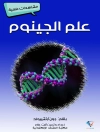The structure, function and reactions of nucleic acids are central to molecular biology and medicine and are crucial for understanding of the ever-expanding range of complex biological processes involved which are central to life. Revised, extended, updated and lavishly illustrated, this 4th Edition of Nucleic Acids in Chemistry and Biology is a long-awaited standard text for teaching and research in nucleic acids science. It maintains the close integration of chemistry and biology that characterised the earlier editions and contains a major expansion largely focused on the burgeoning growth of RNA science. Written by an international team of leading experts, all with extensive teaching experience, this 4th Edition provides up-to-date and extended coverage of the reactions and interactions of RNA and DNA with proteins and drugs. A brief history of the discovery of nucleic acids is followed by a molecule-based introduction to the structure and biological roles of DNA and RNA and the basics of Genes and Genomes. New key chapters are devoted to non-coding RNA, nucleic acids sequencing, nucleic acid therapeutics, in vitro evolution and aptamers, and protein-RNA interactions. The text is linked to an extensive list of references to make it a definitive reference source. This authoritative volume presents topics in an integrated manner and readable style with full colour illustrations throughout. It is ideal for graduate and undergraduate students of chemistry and biochemistry, biophysics and biotechnology, and molecular biology and medicine. It will be a guidebook for new researchers to the field of nucleic acids science.
Table of Content
Introduction and Overview;
DNA and RNA Structure;
Nucleosides and Nucleotides;
Genes and Genomes;
RNA Transcription, Processing, Modification and Translation;
Noncoding RNA;
Synthesis of Nucleic Acids;
DNA and RNA Sequencing;
Nucleic Acid Therapeutics;
In Vitro Evolution and Aptamers;
Covalent Modifications of Nucleic Acids and Their Repair;
Reversible Small Molecule–Nucleic Acid Interactions;
Protein–DNA Interactions;
RNA–Protein Interactions;
Physical and Structural Techniques Applied to Nucleic Acids (Online Chapter)
About the author
Mike Blackburn has been active in chemical biology research for over 50 years, beginning with chemical synthesis of a substrate analogue for ribosomal peptide synthesis (J. Mol. Biol., 1965, 13, 617-628). He studied enzyme mechanisms with W. P. Jencks (Brandeis University, 1966-7) and launched into the use of stable analogues of phosphate esters and anhydrides for studies on nucleotides and glycolysis intermediates from the late ‘70s. This has culminated in the current use of metal fluorides to generate transition state analogues for phosphoryl transfer reactions by kinases, mutases, and isomerases. He has authored some 300 research papers, several patents, one book (“Nucleic Acids in Chemistry and Biology, 3rd Edition, RSC 2005), and is a co-author for more than 70 structures in the Protein Data Bank.












